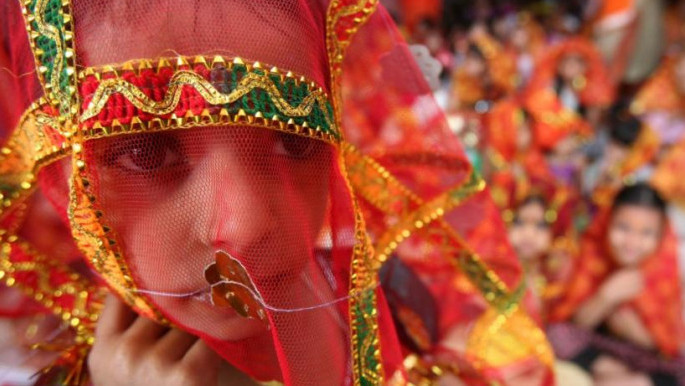By: Zara Amoon
Introduction:
Early child marriages continue to be a pressing issue in many parts of the world, with severe repercussions for the health, education, and well-being of millions of children, particularly girls. In Pakistan, despite the presence of legal frameworks aimed at curbing this practice, child marriages persist due to deeply rooted cultural, economic, and social factors. This article critically examines the prevalence, causes, and impacts of early child marriages in Pakistan, supported by data and real-life accounts, and explores ongoing efforts to combat this grave violation of human rights.
Prevalence of Child Marriages in Pakistan:
According to UNICEF, Pakistan has one of the highest rates of child marriages in South Asia. Statistics reveal that 21% of girls in Pakistan are married before the age of 18, and 3% before the age of 15. These figures underscore a significant public health and social issue that demands urgent attention.
Legal Framework and Challenges:
Pakistan’s legal stance on child marriage is inconsistent. The Child Marriage Restraint Act of 1929 sets the minimum legal age for marriage at 18 for boys and 16 for girls. However, the Sindh Child Marriage Restraint Act of 2013 raised the minimum age to 18 for both genders. Despite these laws, enforcement remains weak, and many marriages involving minors go unregistered, allowing the practice to continue unchecked.
Causes of Early Child Marriages
Cultural Traditions:
Cultural norms and traditions significantly contribute to the persistence of child marriages. In many rural and tribal areas, girls are often seen as a financial burden, and marrying them off early is viewed as a way to alleviate economic strain on the family. The concept of “honor” also drives early marriages, as families believe marrying daughters early preserves their chastity and family reputation.
Poverty:
Economic hardship is a major driver of child marriage. Families in poverty-stricken areas often marry off their daughters to reduce household expenses or to receive bride prices, which can be a critical source of income.
Lack of Education:
Education plays a crucial role in delaying marriage. However, in many parts of Pakistan, girls have limited access to education due to socio-economic barriers, leading to higher rates of child marriage. UNESCO reports that 32% of girls in Pakistan are out of school, a figure that correlates strongly with early marriage statistics.
Inadequate Law Enforcement:
Despite the presence of laws against child marriage, enforcement is often lax. Corruption, lack of awareness among law enforcement agencies, and socio-cultural pressures contribute to the ineffective implementation of legal protections.
Impacts of Child Marriages
Health Risks:
Child brides face severe health risks, including complications from early pregnancies. According to the Pakistan Demographic and Health Survey (PDHS) 2017-18, maternal mortality rates are significantly higher among adolescent mothers. Early pregnancy can lead to obstetric fistula, low birth weight, and higher neonatal mortality rates.
Educational Attainment:
Early marriage often curtails educational opportunities for girls. Once married, many girls drop out of school, limiting their future employment prospects and perpetuating the cycle of poverty. PDHS data indicate that women with higher education levels are less likely to marry early, underscoring the importance of education in combating child marriage.
Psychological Effects:
The psychological impact of child marriage is substantial. Young brides frequently experience mental health issues, including depression and anxiety, due to the pressures of marital responsibilities and the loss of personal freedom.
Domestic Violence:
Early marriages often expose young girls to domestic violence. According to a study by the Human Rights Commission of Pakistan (HRCP), child brides are more likely to experience intimate partner violence than those married as adults.
Efforts to Combat Child Marriages:
Various stakeholders, including the government, non-governmental organizations (NGOs), and international bodies, are working to address the issue of child marriage in Pakistan.
Legislative Measures:
Strengthening and harmonizing laws across provinces is crucial. There is a need for nationwide legislation that sets the minimum age of marriage at 18 for both girls and boys, with strict penalties for violations. Efforts are also needed to improve the registration of births and marriages to ensure all marriages are recorded and scrutinized for compliance with the law.
Educational Initiatives:
Promoting girls’ education is key to preventing child marriages. Programs aimed at keeping girls in school, providing scholarships, and building safe, girl-friendly schools can have a significant impact. Educated girls are more likely to delay marriage and have healthier, more prosperous lives.
Economic Support:
Addressing the economic drivers of child marriage involves providing financial assistance and livelihood programs for impoverished families. Initiatives such as conditional cash transfers, which incentivize families to keep their daughters in school, have shown promise in other countries and could be effective in Pakistan.
Community Engagement:
Changing cultural norms requires grassroots efforts. Engaging community leaders, religious leaders, and parents in dialogues about the harms of child marriage can shift attitudes and behaviors. Programs that empower girls to speak out against early marriage and advocate for their rights are also crucial.
Public Awareness Campaigns:
Raising awareness through media campaigns, workshops, and seminars can educate the public about the negative consequences of child marriage. Highlighting success stories of girls who have avoided early marriage and achieved their dreams can inspire communities to change.
Conclusion:
Early child marriages in Pakistan represent a complex challenge that intertwines cultural traditions, economic hardship, and social norms. While progress has been made in some areas, much work remains to be done to ensure that all children, particularly girls, can enjoy their rights to education, health, and a life free from violence and exploitation. A multi-faceted approach that includes stronger legal frameworks, educational initiatives, economic support, community engagement, and public awareness is essential to end this harmful practice. By addressing the root causes and providing viable alternatives, Pakistan can make significant strides in protecting its children and securing a better future for all.


